Massaman Chicken Curry So Good It Feels Like Magic
Massaman Chicken Curry is not just another Thai dish it’s a bold statement of flavor, culture, and comfort in every bite. When we first launched Just Thai Recipes, our mission was simple: to share Thailand’s most flavorful dishes with home cooks worldwide. On our About page, we share the story of how Lina, our founder, began this journey from her family kitchen. Her passion for authentic Thai flavors, especially warm, aromatic dishes like Massaman curry, led to the creation of a platform that now serves as a go-to source for genuine Thai home cooking.
This article takes you deep into everything you need to know about making the perfect Massaman Chicken Curry at home. From the roots of the dish to expert cooking techniques, helpful storage tips, slow-cooker hacks, and delicious customization ideas, we’ll explore every angle of this irresistible Thai classic.
You’ll also discover how to balance flavors like a pro, what makes this curry taste so unique, and why it’s often referred to as the most comforting dish in Thai cuisine. Plus, we’ll answer the most frequently asked questions about Massaman curry and connect you to hand-picked recipes to enhance your Thai cooking journey.
Looking for inspiration? Try Coconut Milk Chicken That Will Blow Your Mind next it’s another creamy Thai classic that pairs beautifully with jasmine rice.
Table of Contents
Table of Contents
Understanding Massaman Chicken Curry
What is Massaman Chicken Curry?
Massaman Chicken Curry is a rich and hearty Thai dish that blends creamy coconut milk with warm spices and tender pieces of chicken, typically cooked with potatoes, onions, roasted peanuts, and a tangy tamarind-based sauce. It’s often considered one of Thailand’s most comforting dishes, thanks to its balance of sweet, savory, and slightly tangy notes. Unlike spicier Thai curries such as red or green curry, Massaman curry is known for its milder heat and deeper, more complex aroma.
Traditionally made with chicken thighs or drumsticks, this dish is slow-simmered in coconut milk and Massaman curry paste, which features a combination of typical Thai ingredients like lemongrass, galangal, and chili, along with Middle Eastern spices such as cinnamon, cumin, cardamom, cloves, and nutmeg. The result is a fusion-style curry with rich historical roots and a flavor profile that’s both exotic and comforting.
Massaman Chicken Curry has earned its place on the global culinary map and is often the first dish many people try when exploring Thai cuisine for the first time. If you’re looking for something that delivers bold flavor without overwhelming heat, this curry checks every box.
The Cultural and Culinary Origins of Massaman Curry
The story of Massaman curry is as rich as its flavor. The name “Massaman” likely derives from the word “Mussulman,” an old term for Muslims, hinting at its roots as a dish introduced by Persian and Muslim traders to Thailand hundreds of years ago. This makes it one of the few Thai curries with strong influences from Indian and Middle Eastern cooking traditions.
Its origin is commonly traced to Southern Thailand, where Muslim communities have had a long-standing culinary presence. Over time, Thai cooks adapted the curry to local tastes by adding quintessential Thai ingredients like fish sauce, tamarind, and coconut milk, creating the version we know and love today.
Massaman curry gained wider fame when CNN Travel ranked it as one of the world’s most delicious foods. But beyond the rankings, its popularity lies in its comforting taste, appealing aroma, and the way it brings together spices from different cultures into one cohesive dish.
In Thailand, this curry is traditionally served during special occasions or family gatherings, making it more than just food it’s a symbol of warmth, generosity, and celebration. Whether you’re making it for guests or treating yourself to something special, cooking Massaman Chicken Curry brings a piece of Thai hospitality into your home.
Print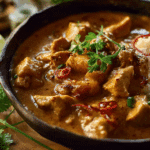
Massaman Chicken Curry
- Prep Time: 15 minutes
- Cook Time: 55 minutes
- Total Time: 1 hour 10 minutes
- Yield: 4 servings 1x
- Category: Main Dish
- Method: Stovetop
- Cuisine: Thai
- Diet: Halal
Description
A rich and aromatic Thai Massaman curry made with tender chicken, creamy coconut milk, hearty potatoes, and a delicious blend of sweet, sour, and savory flavors. Best served with jasmine rice for a comforting and satisfying meal.
Ingredients
- 2 cups (500 ml) coconut milk, divided
- 5 to 6 tablespoons (75 to 90 ml) massaman curry paste, store bought, semi-homemade or homemade
- 3 tablespoons (36 g) finely chopped palm sugar or light brown sugar, packed
- 2 to 3 tablespoons (30 to 45 ml) tamarind paste, store-bought or homemade
- 2 to 3 tablespoons (30 to 45 ml) fish sauce
- 2 pounds (1 kg) chicken thighs and/or drumsticks, bone-in, skin-on
- 10.5 ounces (300 g) waxy potatoes (e.g. new or red-skinned), cut in 1-inch (2.5 cm) chunks
- ½ large yellow onion, cut in ½-inch (1.2 cm) strips
- ¼ cup (35 g) unsalted roasted peanuts
- Jasmine rice, for serving
Instructions
- Place ½ cup (125 ml) of the coconut milk in a large pot and bring to a boil over medium heat.
- Add the massaman curry paste and stir well. Let the mixture cook, stirring frequently, until very thick and the coconut oil separates, about 5 minutes.
- Add the remaining coconut milk and stir to combine, scraping the bottom to release any stuck paste.
- Add palm sugar, 2 tablespoons tamarind paste, and 1 tablespoon fish sauce. Stir well and taste. Adjust seasoning if needed.
- Add the chicken to the pot and simmer gently over low heat, partially covered, for 35 minutes.
- Add the potatoes, onions, and peanuts. Ensure they are mostly submerged in the liquid, adding more coconut milk or water if necessary.
- Cook over medium heat for 10-15 minutes, or until the potatoes are fully cooked.
- Taste and adjust seasoning again with more fish sauce or tamarind paste if desired.
- Serve hot with jasmine rice.
Notes
- Use high-quality coconut milk for best flavor and richness.
- If the curry paste sticks, deglaze with a bit more coconut milk instead of scraping.
- Adjust sweetness and sourness at the end with more sugar or tamarind paste to your taste.
- Jasmine rice or sticky rice both make great pairings.
Nutrition
- Serving Size: 1 serving (with rice)
- Calories: 650
- Sugar: 10g
- Sodium: 780mg
- Fat: 42g
- Saturated Fat: 20g
- Unsaturated Fat: 18g
- Trans Fat: 0g
- Carbohydrates: 35g
- Fiber: 4g
- Protein: 35g
- Cholesterol: 120mg
Keywords: Thai massaman curry, chicken curry, coconut curry, Thai dinner recipe, authentic Thai food
Massaman Chicken Curry Ingredients Deep Dive
Essential Ingredients and Their Roles
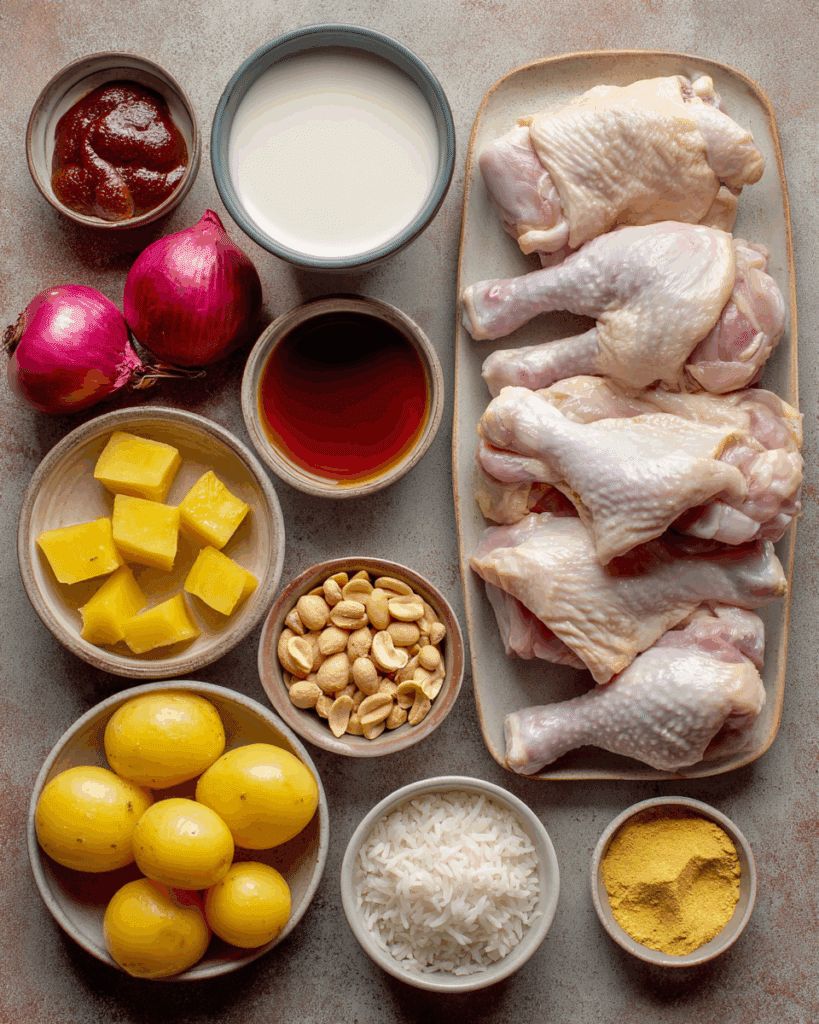
To create an unforgettable Massaman Chicken Curry, the quality and harmony of your ingredients make all the difference. While the method is fairly simple, the ingredients you choose define the curry’s richness, complexity, and authenticity.
Here’s a detailed look at the components that bring this dish to life:
1. Coconut Milk
Coconut milk serves as the base of the curry, adding creaminess and a slightly sweet backdrop that balances the savory spices. Full-fat coconut milk is preferred for its richness. As the curry simmers, the coconut milk absorbs all the spices, resulting in a deeply flavorful sauce. If you’re new to cooking with coconut, you can explore more in our recipe for Coconut Milk Chicken That Will Blow Your Mind, where we show how to get the perfect creamy texture.
2. Massaman Curry Paste
This is the heart of the dish. Massaman curry paste is a unique blend that sets this curry apart from other Thai dishes. It typically includes dried red chilies, lemongrass, galangal, coriander seeds, cumin, cinnamon, cardamom, nutmeg, cloves, and shallots. You can use store-bought curry paste, but for the best flavor, semi-homemade or fully homemade versions are ideal.
3. Palm Sugar
Palm sugar contributes a rich, caramel-like sweetness that balances the saltiness of fish sauce and the sourness of tamarind. Light brown sugar is an acceptable substitute, but authentic palm sugar will bring deeper notes to the curry.
4. Tamarind Paste
Tamarind paste introduces a sour, tangy element that brightens the dish. It’s one of the key flavors that make Massaman curry so addictive. Store-bought paste is widely available, but if you want more control over the taste, homemade versions allow you to fine-tune the tang.
5. Fish Sauce
Fish sauce adds depth, saltiness, and umami, enhancing the savory elements of the dish. It’s essential for seasoning the curry and balancing the sweetness of the coconut and palm sugar.
6. Chicken Thighs or Drumsticks
Bone-in, skin-on chicken is the traditional choice for this dish. The bones enrich the curry sauce while the meat becomes incredibly tender after simmering. Boneless chicken can be used for convenience, but you may lose some of the body that the bones provide to the sauce.
7. Waxy Potatoes
Potatoes like red or new potatoes hold their shape and texture during cooking. They absorb the flavors of the curry while also providing a comforting, starchy contrast to the meat and sauce.
8. Yellow Onion
Onions are added in thick strips and become sweet and tender during cooking. They round out the base of the curry with a mellow flavor that supports the bolder ingredients.
9. Roasted Peanuts
Whole, unsalted peanuts add texture and a subtle nuttiness. They also contribute to the dish’s Thai-Muslim roots, where nuts and legumes are often used in savory cooking.
10. Jasmine Rice
While not part of the curry itself, jasmine rice is the classic side that completes the dish. Its floral aroma and light texture make it perfect for soaking up the rich curry sauce.
If you love working with fragrant rice dishes, don’t miss our Thai-inspired favorite Thai Basil Fried Rice Made Easy – Better Than Restaurants, which uses jasmine rice in a bold new way.
Ingredient Substitutions and Tips for Beginners
One of the best things about Massaman Chicken Curry is how flexible it is. Whether you have dietary preferences or are just working with what’s in your pantry, here are some smart substitutions:
- Coconut Milk: If you’re out, use a mix of heavy cream and water, though this changes the flavor significantly.
- Chicken: Replace with beef or tofu for variety. Tofu should be pressed and pan-seared for better texture.
- Palm Sugar: Brown sugar or coconut sugar can be used, though they have slightly different flavor profiles.
- Tamarind Paste: Use a mix of lime juice and a pinch of sugar for a quick replacement.
- Fish Sauce: For a vegetarian version, swap in soy sauce or tamari.
Keep in mind that the essence of Massaman curry lies in balance. Sweet, sour, salty, and savory must all exist in harmony. Always taste and adjust throughout the cooking process.
Another tip is to use pre-prepped curry kits if you’re short on time. Some semi-homemade kits come with curry paste and coconut milk combined, which simplifies preparation without sacrificing too much flavor.
To explore more semi-homemade Thai meal options, check out Thai Chicken Bites – The Ultimate Snack You Can’t Stop Eating, a great entry-level dish that uses pantry-friendly ingredients.
Step-by-Step Cooking Instructions
Preparing the Flavor Base
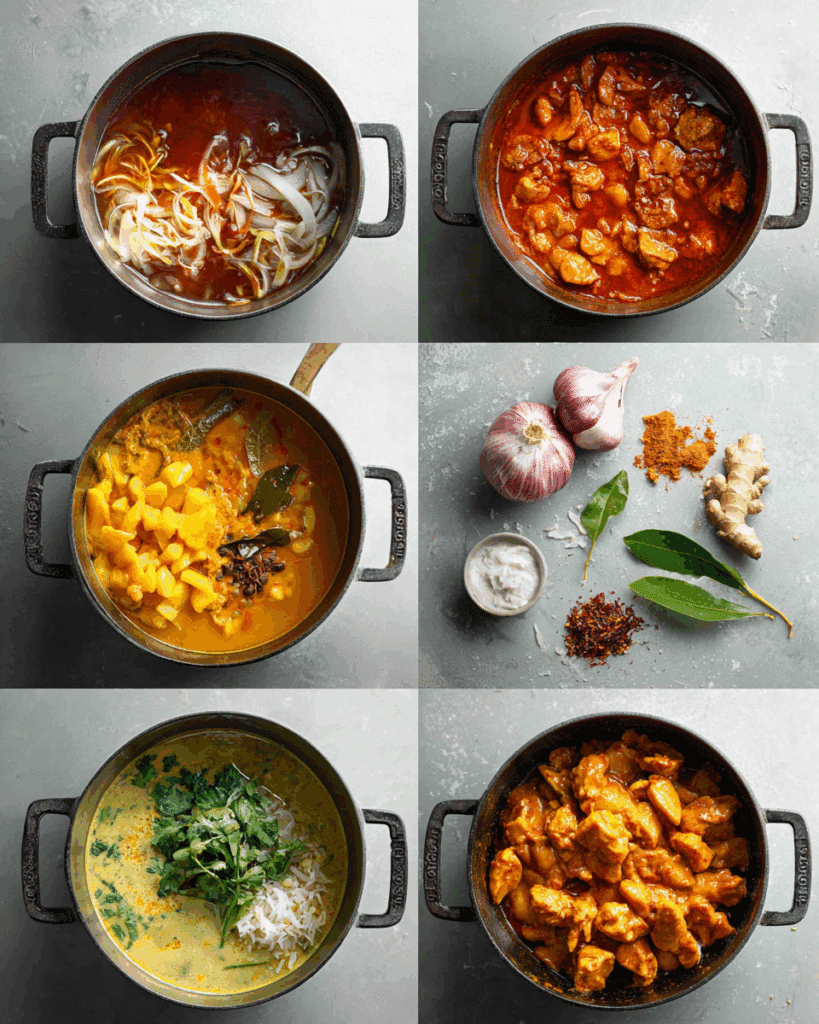
Cooking Massaman Chicken Curry begins by developing the base of the sauce a deeply aromatic mixture of curry paste and coconut milk. This is the foundation that sets the tone for the rest of the dish, so take your time here.
Start by pouring ½ cup of full-fat coconut milk into a large heavy-bottomed pot and heat it over medium heat until it just begins to boil. The goal at this stage is to reduce the coconut milk slightly, allowing the natural fats to separate. This step intensifies the coconut flavor and creates a richer sauce.
Add 5 to 6 tablespoons of Massaman curry paste to the hot coconut milk. Stir the mixture well until it’s smooth and evenly blended. Keep cooking for about five minutes, stirring frequently. The mixture should begin to thicken, and you might see the coconut oil start to rise to the top. If the paste begins to stick to the bottom of the pot, deglaze with a small splash of coconut milk.
The oil separation may not always happen, especially with certain brands of coconut milk. That’s completely fine—the flavor will still develop beautifully.
For visual guidance on how this step should look, Hot Thai Kitchen’s Massaman Curry tutorial offers a fantastic breakdown of the coconut-paste fusion process.
Building the Sauce and Layering the Flavors
Once the curry paste has fully blended and thickened, it’s time to build the sauce. Pour in the remaining 1½ cups of coconut milk and stir thoroughly, making sure to scrape up any bits of curry paste stuck to the bottom. This step ensures the sauce is well-integrated.
Now add the following:
- 3 tablespoons palm sugar (or light brown sugar if substituting)
- 2 to 3 tablespoons tamarind paste
- 1 to 2 tablespoons fish sauce, depending on taste
Stir well, taste, and adjust the seasoning if needed. It should taste slightly sweet, tangy, and savory, with just a mild background heat. Don’t worry if it feels a bit intense—this flavor will mellow out as the chicken cooks.
Now nestle your chicken thighs or drumsticks (about 2 pounds) into the sauce. Reduce the heat to low, partially cover the pot, and allow the chicken to simmer gently for around 35 minutes. This slow simmering helps the chicken absorb the curry flavors and ensures it stays moist and tender.
Adding the Vegetables and Final Simmer
Once the chicken is nearly cooked through, it’s time to introduce the heartier ingredients:
- 10.5 ounces of waxy potatoes, cut into chunks
- ½ large yellow onion, sliced into ½-inch strips
- ¼ cup roasted unsalted peanuts
Add these directly into the pot with the chicken. Check the liquid level. If it looks like the potatoes and onions aren’t fully submerged, top it off with more coconut milk or a bit of water. Using coconut milk will make the curry creamier, but water works if you prefer a lighter version.
Simmer the curry uncovered or partially covered over medium heat for 10 to 15 minutes, or until the potatoes are fork-tender and the onions have softened. Stir occasionally to prevent sticking.
Taste the sauce one final time and adjust with a splash of fish sauce for salt or an extra spoon of tamarind paste for tang. You can even add a small pinch of sugar if it needs more sweetness.
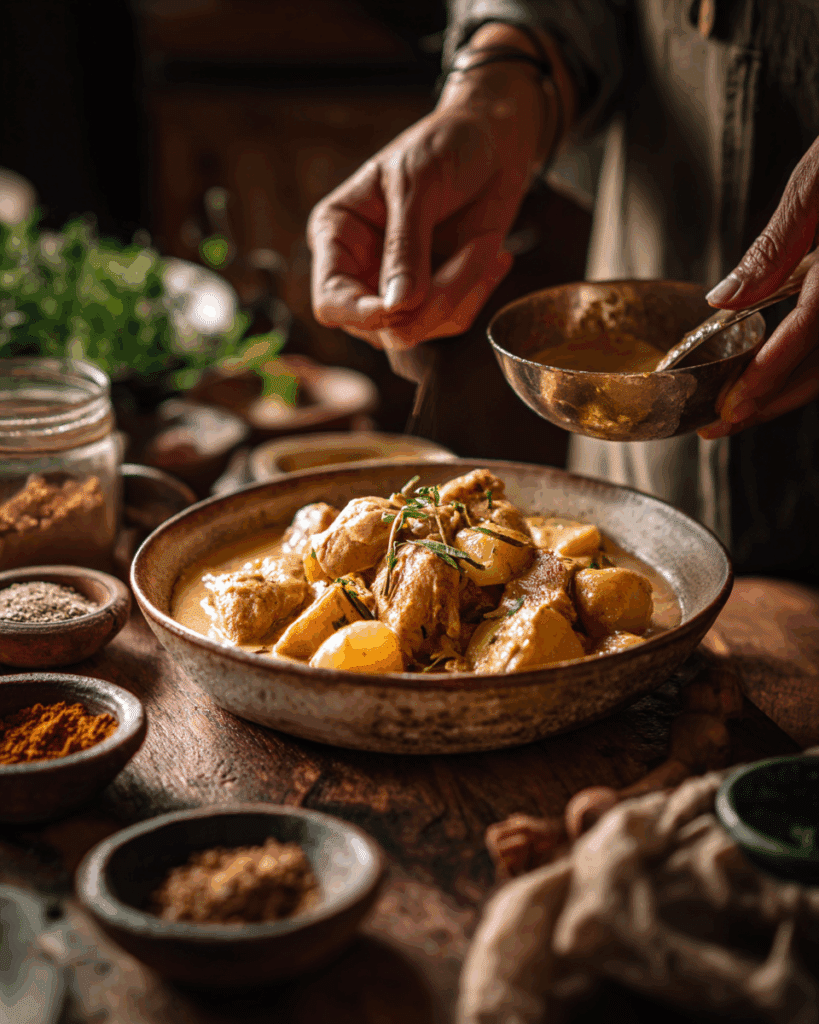
If you’re more of a visual learner or want to explore variations, Marion’s Kitchen provides an excellent step-by-step Massaman curry guide with pictures that illustrate every phase of cooking.
Serving Suggestions
Once the curry is done simmering, turn off the heat and let it rest for a few minutes to allow the flavors to settle. Serve it hot with steamed jasmine rice, which soaks up the luscious curry sauce and complements the soft potatoes and chicken perfectly.
For a heartier presentation, garnish the dish with a few extra roasted peanuts, fresh cilantro, or even a wedge of lime if you enjoy a citrusy edge.
Feeling adventurous? Some Thai food lovers recommend serving Massaman curry with a side of roti for a Southern Thai twist. You can see this approach highlighted in Thai Foodie’s version of Massaman curry, where the sauce is soaked up with flaky, buttery flatbread.
Pro Tip for Beginners
Cook your jasmine rice while the chicken simmers, so everything finishes at the same time. The timing works out perfectly about 30 to 35 minutes for both. Fluff the rice with a fork just before serving for the best texture.
If you’re looking to make this meal even more efficient, consider prepping your curry paste in advance. For a detailed approach to simplifying Thai curries for weeknight meals, Chef’s Binge offers an easy chicken Massaman curry recipe with time-saving tricks.
Taste and Texture – What to Expect
The Rich Flavor Profile of Massaman Chicken Curry
When you take your first bite of Massaman Chicken Curry, you’ll notice that it’s unlike any other Thai curry. Instead of bold, spicy heat, this dish welcomes you with a smooth, mellow warmth. It’s deeply aromatic, slightly sweet, gently tangy, and layered with a medley of spices that feel both familiar and exotic.
The combination of coconut milk and curry paste forms the foundation of this flavor. Coconut milk lends a creamy mouthfeel and subtle sweetness, while the curry paste brings in complexity with spices like cardamom, cinnamon, clove, and nutmeg. These spices give Massaman Chicken Curry its unique fragrance and cozy warmth.
As you chew, you’ll pick up the slight saltiness from the fish sauce and the caramel depth from the palm sugar. Tamarind adds a tang that balances the rich base, brightening each spoonful. The result is a flavor that is balanced and rounded, with no single element overpowering the rest.
Unlike other Thai curries that emphasize chili heat, Massaman Chicken Curry focuses more on aromatic intensity. It’s a dish where the spices are felt through their warmth and fragrance rather than a burning sensation.
Texture That Comforts
The texture of Massaman Chicken Curry is another reason why it has become such a beloved comfort dish. The sauce is thick, smooth, and luxurious, almost like a stew. This texture comes from the slow simmering of coconut milk and the natural starches released by the potatoes.
The chicken, especially when using thighs or drumsticks, becomes incredibly tender after simmering in the curry for over 30 minutes. It practically falls off the bone, soaking up the surrounding flavors. Each piece is infused with the curry’s essence, making every bite juicy and flavorful.
Potatoes in Massaman Chicken Curry offer a hearty contrast. They’re soft but not mushy, absorbing the curry while retaining their structure. Their creamy texture blends beautifully with the sauce, giving you a satisfying bite.
You’ll also find roasted peanuts scattered throughout the curry, providing a delightful crunch that breaks up the smooth textures. Their subtle nuttiness adds a new layer to the flavor, enhancing the depth of the dish without overwhelming the palate.
Onions play a quiet but essential role. They soften into the sauce, adding a natural sweetness that supports the more assertive spices. They almost melt into the background, giving the curry more body and flavor dimension.
A Comfort Food Favorite
Whether served on a cold evening or as a special Sunday meal, Massaman Chicken Curry brings the kind of comfort that few dishes can match. It’s hearty enough to satisfy hunger, yet gentle enough for those who prefer milder foods. It offers a taste of Thailand’s culinary history while remaining accessible to anyone, no matter their experience level with Thai cuisine.
People often describe Massaman Chicken Curry as “Thai comfort food,” and with good reason. Its slow-cooked tenderness, warm spices, and rich coconut base make it perfect for relaxing meals at home. It’s the kind of dish that fills the room with aroma, draws people to the kitchen, and keeps them coming back for seconds.
If you’re preparing it for guests, expect compliments. If you’re making it just for yourself, expect leftovers to taste even better the next day as the flavors continue to meld.
By now, you’ve likely noticed how Massaman Chicken Curry appeals to all the senses. From the smell of the spices cooking down in coconut milk to the velvety sauce coating each bite, it’s a full experience that’s both satisfying and memorable.
Variations and Customizations
Flexible Ways to Make Massaman Chicken Curry Your Own

One of the most appealing aspects of Massaman Chicken Curry is how versatile it can be. While the traditional version includes chicken, coconut milk, curry paste, potatoes, and peanuts, this dish invites creativity. Whether you’re adapting it to dietary preferences, trying different proteins, or using cooking shortcuts, Massaman Chicken Curry can easily become your signature dish at home.
Let’s explore some delicious customizations that keep the heart of the dish intact while giving it a personal touch.
Protein Swaps for Different Diets
Chicken thighs and drumsticks are the classic choice for Massaman Chicken Curry, but there are plenty of other proteins that work just as well. Here are some popular alternatives:
- Beef: A common variation is beef Massaman curry. Use chuck roast or stewing beef, and let it simmer until tender. The longer cooking time allows the meat to soak up all the flavors.
- Tofu: For a vegetarian or vegan version, firm tofu is a great option. Press it to remove moisture, cube it, and lightly fry before adding to the curry. This helps it hold its shape and absorb more flavor.
- Shrimp or fish: Though less traditional, seafood can be used. Add it toward the end of cooking to avoid overcooking.
- Lamb: For a richer, slightly gamey twist, lamb pairs well with the deep spices found in Massaman curry paste.
With any of these swaps, the flavor base remains the same, allowing you to enjoy all the delicious complexity of Massaman Chicken Curry regardless of the protein you choose.
Vegetable Additions and Substitutes
While potatoes and onions are staples in Massaman Chicken Curry, adding or substituting vegetables is a great way to change the flavor profile and boost nutrition.
- Sweet potatoes: These add a touch of natural sweetness and work beautifully with the savory sauce.
- Carrots: A firm vegetable that holds up well to simmering and adds a gentle crunch.
- Bell peppers: Introduce a fresh flavor and a pop of color.
- Cauliflower: Great for low-carb versions and absorbs the curry sauce nicely.
- Green beans: Add a fresh snap to the otherwise soft texture.
Using a mix of these vegetables doesn’t just improve the look of your Massaman Chicken Curry but also makes it a more balanced meal. Just be sure to add quick-cooking vegetables later in the process to maintain their texture.
Coconut Milk Adjustments
Traditional Massaman Chicken Curry uses full-fat coconut milk for its creamy richness. However, if you’re looking for a lighter version, there are some ways to adjust:
- Use light coconut milk to reduce the fat content. Keep in mind this will produce a thinner sauce.
- Combine half coconut milk with vegetable broth to retain some creaminess without all the calories.
- Add a spoon of coconut cream at the end for a touch of richness without overdoing it.
While coconut milk is essential to the character of Massaman Chicken Curry, small adjustments like these let you tailor the dish to your dietary needs without sacrificing flavor entirely.
Massaman Chicken Curry in a Slow Cooker
For those who love hands-off cooking, the slow cooker is an ideal tool for making Massaman Chicken Curry. It allows the flavors to develop gradually and the chicken to become fall-apart tender.
To prepare it this way:
- Place raw chicken, curry paste, coconut milk, palm sugar, tamarind, and fish sauce in the slow cooker.
- Stir to combine and set on low for 6 to 8 hours.
- Add potatoes, onions, and peanuts in the last 1 to 2 hours of cooking to prevent them from becoming too soft.
- Taste and adjust the seasoning before serving.
This method is perfect for busy days and ensures a flavorful, comforting curry waiting for you at the end of the day. The long cook time enhances the complexity of the spices and makes Massaman Chicken Curry even more satisfying.
Meal Prep and Leftover Ideas
If you’re cooking for one or two, Massaman Chicken Curry stores beautifully and tastes even better the next day. This makes it perfect for meal prep.
You can portion it into containers with jasmine rice for easy weekday lunches. The flavors deepen overnight, and the curry thickens slightly, giving you a richer taste experience.
Leftovers can also be creatively transformed. Use the remaining curry as a filling for wraps or spoon it over baked potatoes. You can even thin it out with a bit of broth and turn it into a flavorful soup.
These variations not only reduce food waste but keep your meals exciting throughout the week. With Massaman Chicken Curry, you’re never short on delicious possibilities.
Pairing Suggestions and Serving Ideas
Perfect Side Dishes for Massaman Chicken Curry
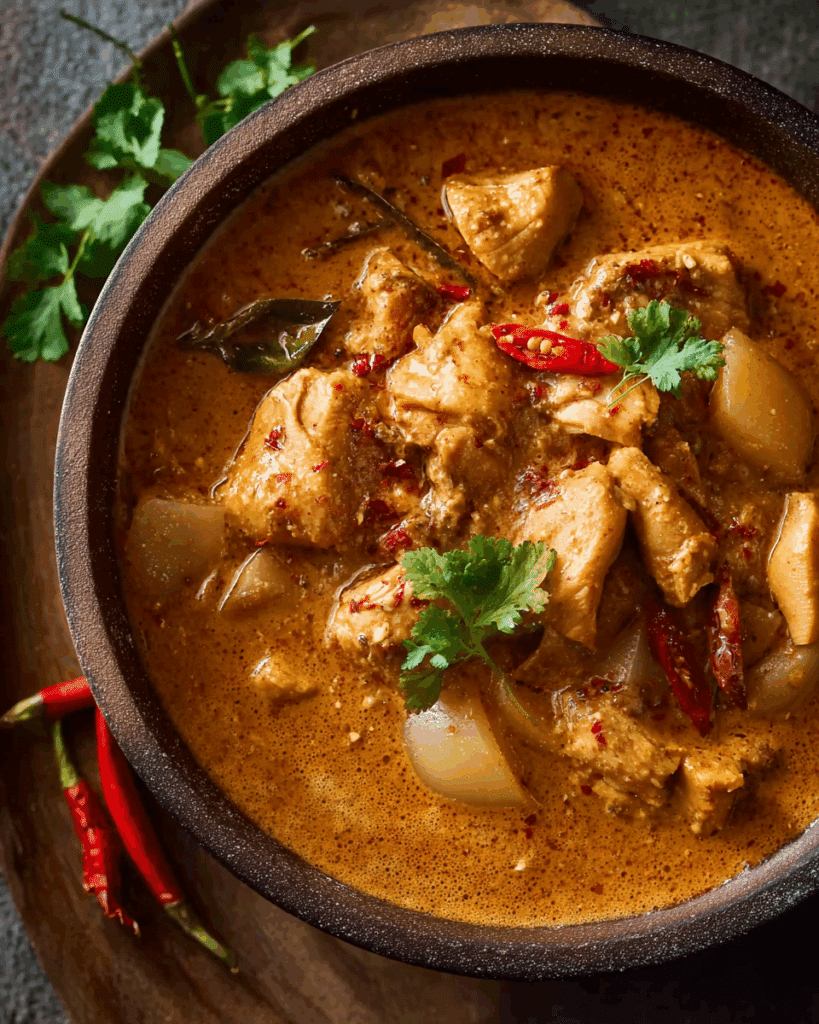
When serving Massaman Chicken Curry, the side dish you choose plays a big role in enhancing the overall dining experience. Since the curry itself is rich, creamy, and loaded with warming spices, a neutral or lightly seasoned side allows those bold flavors to shine.
The most common and traditional accompaniment is steamed jasmine rice. Its light, floral aroma and fluffy texture make it ideal for soaking up the thick coconut-based sauce in Massaman Chicken Curry. Jasmine rice does not compete with the curry’s flavor, allowing each spoonful to carry just the right balance of taste and texture.
If you’re looking for an alternative to rice, try sticky rice. It offers a chewier bite and adds a touch of authenticity, especially if you want to enjoy your meal Thai-style using your hands. This is especially fun and interactive when eating Massaman Chicken Curry with friends or family.
For those interested in a low-carb option, cauliflower rice is a smart choice. While it won’t soak up the sauce as thoroughly as traditional rice, it still complements the flavors and maintains a light feel. It’s ideal for those wanting a healthier variation of Massaman Chicken Curry without sacrificing satisfaction.
Bread and Roti Options
In Southern Thailand, roti is sometimes served with curries, and it works surprisingly well with Massaman Chicken Curry. The soft, slightly chewy texture of roti makes it perfect for scooping up the curry and wiping the bowl clean. Warm flatbreads such as naan can also be used as a substitute if roti is not available.
These bread options not only offer a break from the usual rice pairing but also introduce a contrasting texture that highlights the velvety smoothness of the curry.
Vegetable Sides That Refresh
Because Massaman Chicken Curry is a rich and dense dish, light and refreshing vegetable sides are a great way to balance the meal. A crisp cucumber salad with lime juice and herbs can cut through the heaviness of the curry. Similarly, a Thai-style papaya salad or a simple steamed vegetable medley can add brightness and crunch.
Adding these elements to your plate brings visual variety and gives the palate something cool and clean between bites of spicy, savory curry. You’ll find that Massaman Chicken Curry becomes even more enjoyable when served alongside a fresh and vibrant side.
Beverage Pairings
A great drink can elevate your curry night to another level. The creamy texture and slightly sweet flavor of Massaman Chicken Curry pairs beautifully with drinks that either cleanse the palate or complement its richness.
For a traditional Thai experience, Thai iced tea is a favorite. Its sweetened condensed milk and strong brewed tea flavor blend well with the spice and coconut in the curry. The coolness of the tea is also a welcome contrast to the warmth of the dish.
If you prefer something less sweet, a cold unsweetened green tea or even sparkling water with a squeeze of lime works well. These beverages refresh the palate and allow the flavors of Massaman Chicken Curry to remain the star of the meal.
If serving adults, a light beer or a semi-dry white wine such as Riesling or Gewürztraminer can also enhance the experience. These drinks offer just enough acidity and sweetness to complement the curry’s spice profile.
Presentation Tips
Massaman Chicken Curry deserves to be presented in a way that reflects its rich flavors and history. Use deep, wide bowls to capture the sauce and allow for generous portions of chicken, potatoes, and peanuts in every serving.
Garnish the dish with a few whole roasted peanuts, a sprinkle of fresh cilantro, and maybe a slice of red chili if you want to add a splash of color. Serving it with a wedge of lime on the side can also add brightness for those who like a hint of citrus.
Make sure the rice or bread is placed nearby, preferably in a separate bowl or basket. This keeps it from becoming soggy and allows diners to scoop up just the right amount of curry with each bite.
When served this way, Massaman Chicken Curry becomes more than just dinner—it becomes an experience that invites slow eating, full flavors, and joyful conversation.
Storage and Leftover Tips
How to Store Massaman Chicken Curry Properly
Once you’ve made a full pot of Massaman Chicken Curry, you’ll likely find yourself with leftovers—and that’s a good thing. This dish not only holds up well over time but actually improves in flavor after sitting overnight. The slow-melding of spices with coconut milk makes every reheated serving just as rich and satisfying, if not better.
To store Massaman Chicken Curry safely, allow the curry to cool down to room temperature before transferring it to airtight containers. Store the curry in the refrigerator within two hours of cooking to prevent bacterial growth. Make sure the lid is sealed tightly to keep the aroma from spreading and to retain moisture.
When stored properly, Massaman Chicken Curry can stay fresh in the refrigerator for up to three days. Beyond that, the coconut milk may begin to separate, and the flavor can start to deteriorate. However, within that three-day window, the curry remains just as comforting and deeply flavorful.
Reheating for Maximum Flavor
Reheating Massaman Chicken Curry is easy, but a few techniques can help preserve its texture and taste. The best method is to reheat it gently on the stovetop over medium-low heat. Stir occasionally to prevent sticking and ensure even warming. If the sauce has thickened too much in the fridge, simply add a splash of coconut milk or a little water to loosen it up.
Microwaving is also acceptable for reheating, especially if you’re short on time. Use a microwave-safe container, cover it loosely to avoid splatters, and heat in 45-second intervals, stirring in between. This method works well for individual portions of Massaman Chicken Curry, though the stovetop remains the top choice for flavor retention.
Avoid reheating more than once. Repeated warming can cause the chicken to dry out and the potatoes to become mushy, which diminishes the quality of the curry. Instead, divide the leftovers into small containers for one-time use. This keeps every portion of Massaman Chicken Curry tasting as fresh as possible.
Freezing Instructions for Future Meals
If you have a large batch of Massaman Chicken Curry and want to extend its shelf life, freezing is a great option. However, you’ll want to make a few adjustments before you do.
Potatoes don’t freeze well in most curries. After thawing, they tend to become grainy and fall apart. To prevent this, consider removing the potatoes from the curry before freezing, or better yet, add freshly cooked potatoes when you’re ready to reheat and serve. The chicken and sauce, however, freeze beautifully.
Place the cooled curry in a freezer-safe container or zip-top freezer bag, removing as much air as possible to avoid freezer burn. Label the container with the date and contents. Massaman Chicken Curry can be frozen for up to two months. When ready to eat, thaw overnight in the refrigerator and reheat gently using the stovetop method.
This approach not only helps with meal prep but ensures that you always have a comforting bowl of Massaman Chicken Curry ready to go whenever you need a warm, flavorful meal.
Transforming Leftovers into New Dishes
While Massaman Chicken Curry is amazing on its own, the leftovers can also be used creatively. Here are a few ideas to turn yesterday’s meal into something new:
- Massaman Chicken Wraps: Shred the chicken, reduce the sauce slightly, and use it as a filling for wraps or flatbreads.
- Stuffed Potatoes: Scoop out baked potato halves and fill them with warmed-up Massaman Chicken Curry, then top with a sprinkle of crushed peanuts or herbs.
- Massaman Chicken Soup: Add broth to thin out the curry, throw in some fresh greens or noodles, and you’ve got a hearty, warming soup in minutes.
These leftover ideas not only reduce waste but also add variety to your weekly meals. Having Massaman Chicken Curry in the fridge or freezer means you’re always one step away from a comforting dish that fits into multiple meal types lunch, dinner, or even an elegant brunch option when served in creative ways.
Common Mistakes to Avoid
Overlooking the Balance of Flavors
A key part of what makes Massaman Chicken Curry so beloved is its perfect balance of sweet, salty, sour, and mildly spicy flavors. One of the most common mistakes is focusing too heavily on just one of these flavor elements. Adding too much sugar can make the curry overly sweet, while too much fish sauce can turn it overwhelmingly salty.
Always taste the sauce before and after adding the chicken. Adjust gradually. If it’s too sour from the tamarind, a touch more palm sugar will round it out. If it’s too sweet, add a bit more tamarind or fish sauce. The art of Massaman Chicken Curry lies in this delicate balance, and skipping the tasting process can result in a dish that doesn’t showcase its full complexity.
Using the Wrong Cut of Chicken
Another mistake home cooks often make when preparing Massaman Chicken Curry is using boneless, skinless chicken breasts. While convenient, chicken breasts tend to dry out quickly, especially during a longer simmer. This can lead to a curry with bland, dry meat that lacks the deep flavor you get from bone-in cuts.
The traditional choice is bone-in, skin-on chicken thighs or drumsticks. These cuts stay moist and tender, even after extended cooking, and the bones release collagen that adds richness to the sauce. Choosing the right chicken makes a noticeable difference in the final dish.
Skipping the Curry Paste Cooking Step
A foundational step in making flavorful Massaman Chicken Curry is cooking the curry paste in coconut milk until it thickens and becomes fragrant. This process allows the paste to release its essential oils, which deepens the aroma and taste of the curry. Skipping or rushing this step often results in a flat, underdeveloped sauce.
Make sure you let the curry paste simmer with a small amount of coconut milk at the beginning. Stir it frequently and let it reduce until the coconut oil begins to separate, or at least until the mixture is noticeably thick and aromatic. This step sets the foundation for everything that follows.
Adding Ingredients at the Wrong Time
Timing matters when making Massaman Chicken Curry, especially when adding vegetables like potatoes and onions. Adding them too early causes them to become overly soft or even disintegrate into the sauce. Adding them too late, however, means they may not fully absorb the flavor of the curry.
The best approach is to let the chicken simmer first in the seasoned coconut sauce. Then, once it’s nearly done, add the potatoes, onions, and peanuts. This allows the vegetables to soften without losing their texture, and it ensures they absorb the curry’s full flavor without becoming mushy.
Not Controlling the Heat
Massaman Chicken Curry is known for its mild warmth rather than searing spice. One mistake some cooks make is overloading it with chili heat, assuming all Thai curries should be fiery. Massaman curry should be approachable and comforting. If you enjoy spice, it’s better to serve chili flakes or sliced fresh chilies on the side, allowing each person to customize their heat level.
On the other hand, cooking the curry over high heat throughout the process is also a mistake. A gentle simmer is key. High heat can break the coconut milk and cause the sauce to split, resulting in an unappealing texture. Keeping the heat low allows everything to cook evenly and gives the flavors time to fully develop.
Ignoring Quality of Ingredients
Because Massaman Chicken Curry uses relatively few ingredients, the quality of each one makes a big impact. Using low-quality coconut milk can result in a watery sauce that lacks richness. Mass-produced curry pastes may also lack the depth of homemade or semi-homemade options.
If possible, choose full-fat coconut milk without additives, and look for a curry paste that lists whole spices and natural ingredients. Fresh tamarind paste and palm sugar are also worth sourcing for their depth of flavor. When each component is high quality, the finished Massaman Chicken Curry is guaranteed to impress.
Neglecting Rest Time Before Serving
Letting the curry rest for a few minutes after cooking is often overlooked but can elevate your Massaman Chicken Curry from good to great. Resting allows the flavors to settle and the temperature to even out, making each bite more balanced and flavorful. It also gives the sauce time to thicken slightly, making it ideal for serving over rice.
By avoiding these common mistakes, you ensure that your Massaman Chicken Curry delivers on all its promises creamy, tender, aromatic, and deeply satisfying.
Conclusion
Whether you’re making it for the first time or perfecting your own version, Massaman Chicken Curry has something to offer every kind of home cook. It’s approachable yet impressive, easy to prepare but full of depth. It’s also highly adaptable, making it suitable for weeknight meals, special occasions, or slow-cooked weekend dinners. The ability to store, reheat, and repurpose leftovers only adds to its value in the kitchen.
There’s no denying the irresistible appeal of Massaman Chicken Curry. It’s a dish that combines warmth, comfort, and complexity in every bite. From its rich coconut base to the delicate balance of spices, every element of Massaman Chicken Curry tells a story rooted in cultural fusion and culinary tradition. This is not just another Thai recipe it’s an experience that brings people together and leaves lasting memories.
If you’ve followed this guide, you now have all the tools needed to create a truly authentic Massaman Chicken Curry that captures the heart of Thai comfort food. From selecting quality ingredients to mastering the cooking method and customizing to your taste, each step brings you closer to a dish that feels both exotic and familiar.
So the next time you’re craving something deeply flavorful, mildly spiced, and soul-satisfying, remember that Massaman Chicken Curry isn’t just a recipe—it’s a celebration of taste, culture, and culinary creativity.
Massaman Chicken Curry FAQs
Is Massaman curry spicy?
Compared to many other Thai dishes, Massaman Chicken Curry is not considered spicy. It has a mild heat that is more warming than hot. The curry paste contains dried chilies, but their presence is softened by the coconut milk and other ingredients like palm sugar and potatoes. This makes Massaman Chicken Curry a great option for people who prefer milder meals or for families with children. For those who enjoy more heat, extra chilies can be added separately without changing the core flavor of the curry.
What does Massaman curry taste like?
The flavors are layered—first, you’ll notice the creamy sweetness from the coconut milk, followed by a subtle tang from tamarind and a gentle saltiness from the fish sauce. The use of cinnamon, cloves, and cardamom adds depth and a comforting, almost stew-like quality. Overall, Massaman Chicken Curry tastes rich and soothing, with just enough spice to excite the palate without overwhelming it. It’s one of the most balanced Thai dishes, ideal for those new to Thai flavors.
What is Massaman curry made of?
The key to a flavorful Massaman Chicken Curry is in the curry paste. Massaman curry paste is made from a combination of Thai ingredients and imported spices. Traditional ingredients include dried red chilies, lemongrass, galangal, garlic, shallots, coriander seeds, cumin, cinnamon, cardamom, cloves, nutmeg, and white pepper. When blended with creamy coconut milk, this paste forms the aromatic foundation of Massaman Chicken Curry. The finished dish typically includes chicken, potatoes, onions, peanuts, tamarind paste, palm sugar, and fish sauce, all simmered together until tender.
What is Massaman Chicken Curry?
Massaman Chicken Curry is a traditional Thai dish known for its rich, comforting flavor and unique blend of spices. It features chicken simmered in a coconut milk-based sauce made with Massaman curry paste, tamarind, palm sugar, fish sauce, potatoes, and peanuts. Unlike spicier Thai curries, Massaman Chicken Curry is mild and slightly sweet, with aromatic notes of cinnamon, cardamom, and clove. This dish reflects a fusion of Thai and Middle Eastern influences, making it a standout in Thai cuisine and a favorite for anyone seeking something hearty and flavorful.

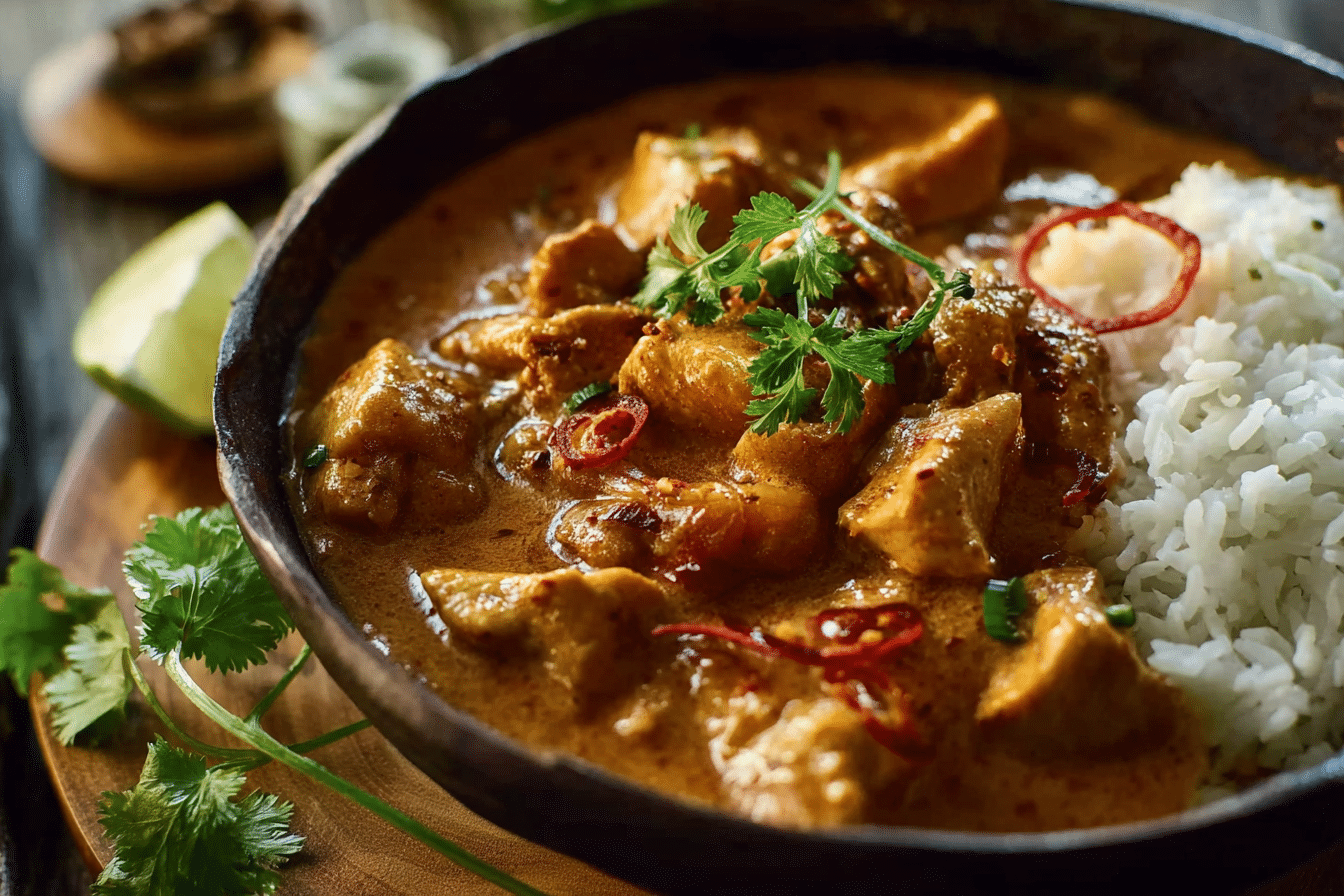
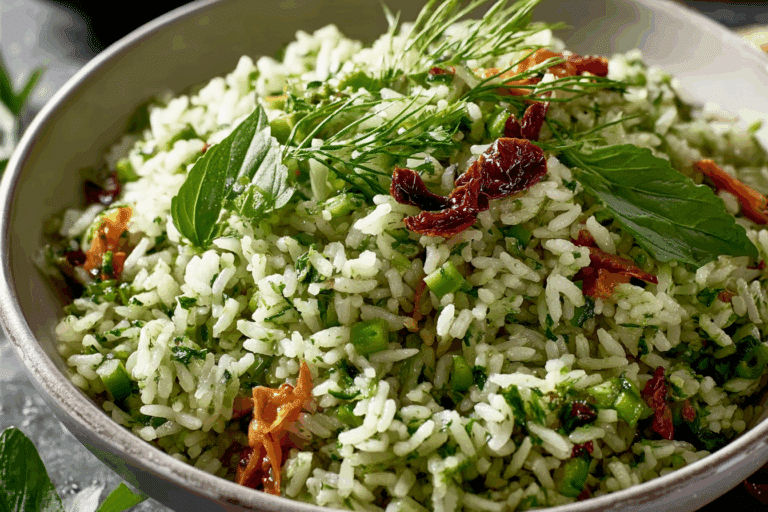
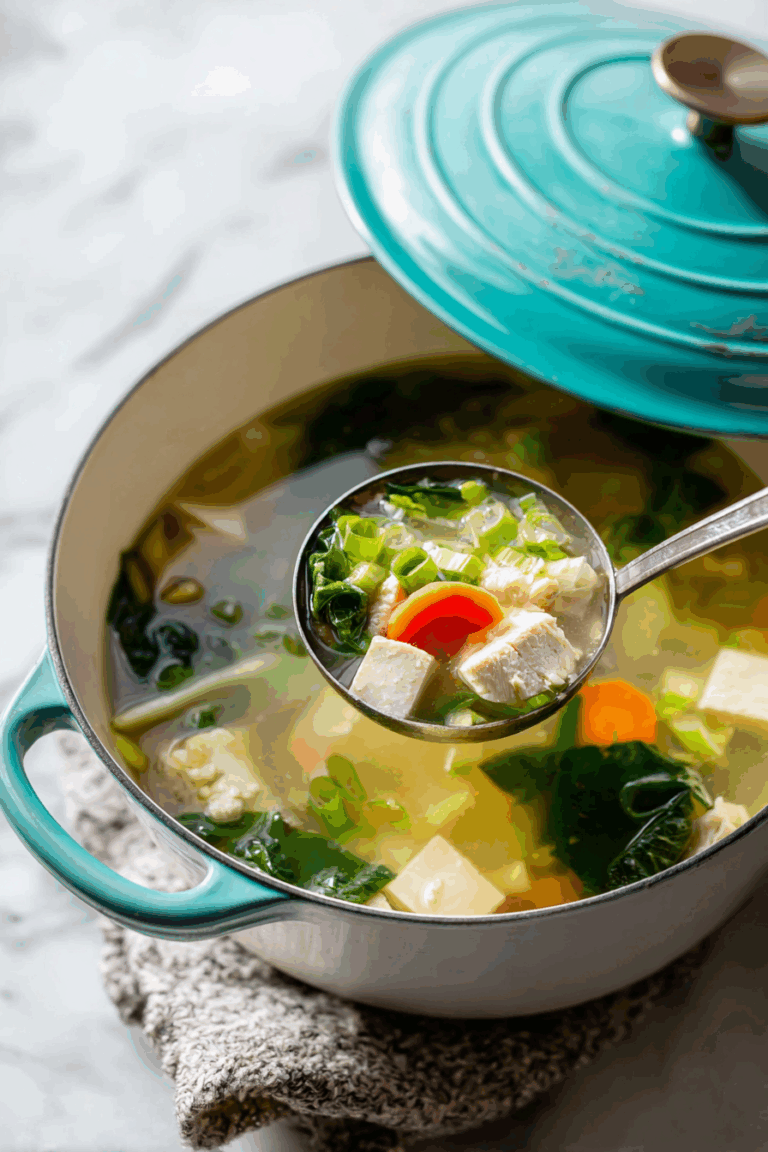
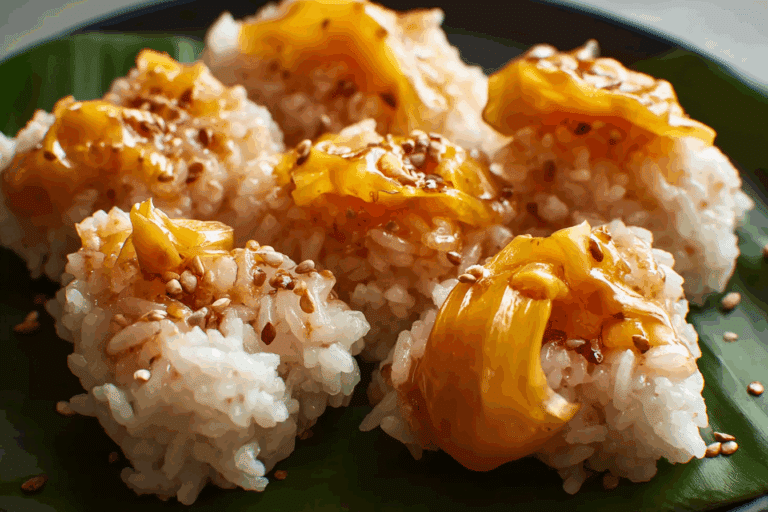
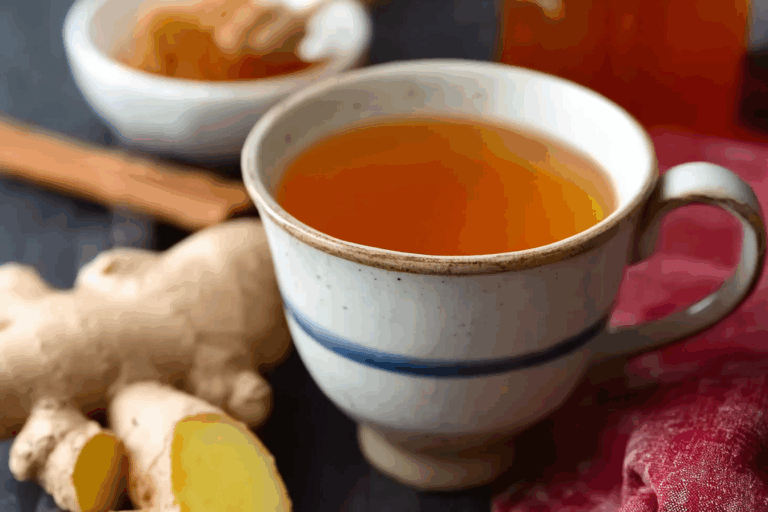
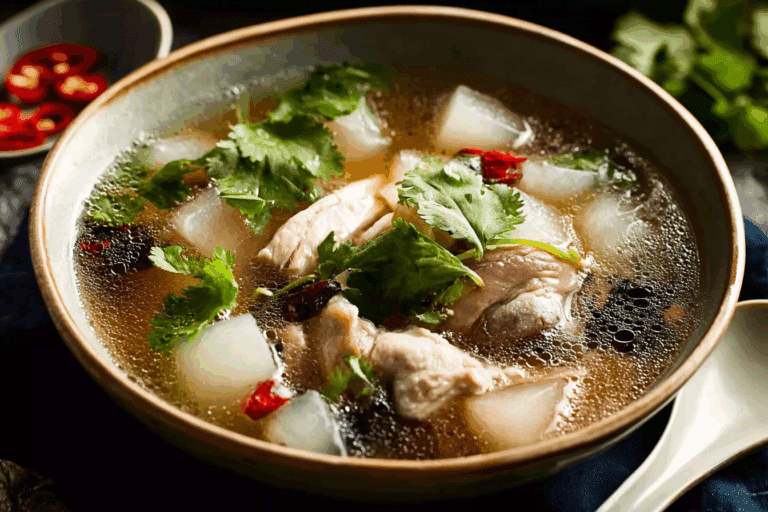

I believe that is one of the such a lot significant info for me.
And i’m happy studying your article. But want to statement
on few normal things, The web site style is wonderful,
the articles is truly nice : D. Good activity, cheers
★★★★★
Hello this is kinda of off topic but I was wondering if
blogs use WYSIWYG editors or if you have to manually
code with HTML. I’m starting a blog soon but have no
coding know-how so I wanted to get guidance from someone with experience.
Any help would be enormously appreciated!
★★★★★
I really treasure your work, Great post.